Norway is a world-class hiking destination, attracting both professional and leisure walkers from all over the world. Here's how to plan a memorable hiking trip.
Since moving to Norway more than a decade ago, hiking has become part of my everyday life – although not always in the way you might expect.
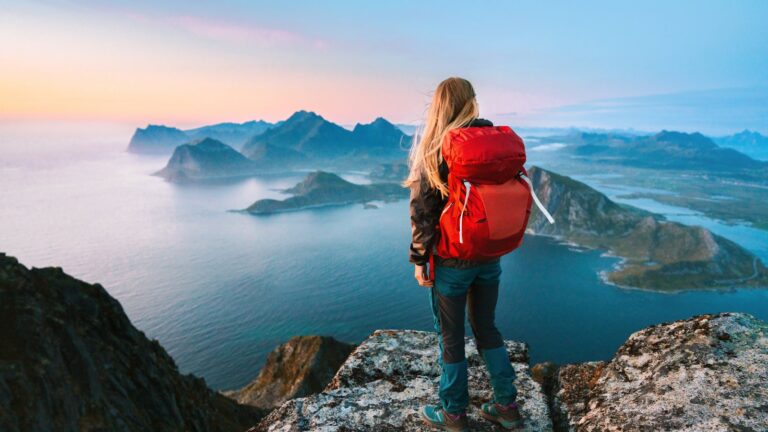
I'm not one of those hardcore hikers who bags every peak with a 30kg backpack and tent in tow, and I don't think I ever will be.
But that’s the beauty of friluftsliv, Norway’s deep-rooted philosophy of outdoor living. It’s not about extremes — it’s about being outside, in nature, in whatever way works for you.
These days, I’m more of an urban walker. Not a mall walker you'll find in the States (!), but the kind you'll find strolling along the river in Trondheim, chasing the last of the daylight through city parks, or heading up into the forest trails that frame the town.
That said, whenever I travel to the fjords or venture out into Norway's wilder corners, I always look for a trail before I book a pricey excursion. There's nothing quite like earning your view, and in Norway, those views are often spectacular.
So whether you're an avid trekker planning your next big adventure or simply someone who enjoys a good walk with a great view, Norway has something for you.
From dramatic mountain ridges and glacier landscapes to peaceful lakeside strolls, this guide will help you plan your perfect hike and avoid the crowds while you’re at it.
Table of Contents
Why Norway Is a Hiker’s Dream
From multi-day mountain adventures to gentle fjordside walks, Norway is an incredibly varied hiking destination.
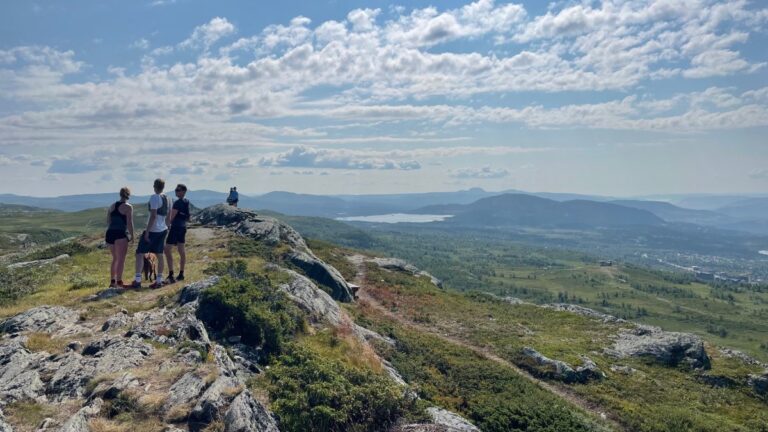
With many national parks, endless forest trails, a world-famous coastline, and cities surrounded by nature, it's a country built for walkers.
But this isn’t a destination where you just rock up and expect every path to be marked and accessible. Norway rewards preparation. The best hikes can often be the ones you discover with a bit of local knowledge and a willingness to embrace changeable weather.
The Right to Roam
One of the major plus points of hiking in Norway is the law known as allemannsretten, or the freedom to roam. As in the other Nordic countries and Scotland, Norway's countryside has an open access policy.
Specifically, everyone in Norway enjoys the right of access to, and passage through, uncultivated land. The traditional right entered modern law in the Outdoor Recreation Act of 1957.
In saltwater areas, recreational fishing is permitted from boats or from the shoreline. Wild berry picking is also allowed, but hunting is not.
Although wild camping is permitted, you are only allowed to stay in the same spot for one day before needing to ask permission from the landowner, unless you are in the mountains and/or national parks.

Tents must be pitched at least 150 metres away from private houses, and campfires are not allowed in forested areas from mid-April to mid-September.
National Parks for Hiking in Norway
With 33 mainland national parks to choose from, Norway offers incredible diversity for hikers. From glacier-draped valleys to mountain plateaus teeming with wildlife, each park has its own personality.
Here are some of the most rewarding national parks for hiking, whether you're looking for challenging climbs or peaceful rambles.
Jotunheimen National Park
Known as the “Home of the Giants,” Jotunheimen National Park is a magnet for hikers and climbers thanks to its dramatic alpine landscape. This park is home to Norway’s two highest peaks, Galdhøpiggen and Glittertind, but it’s not just for expert mountaineers.
The ascent of Galdhøpiggen is surprisingly accessible from Juvasshytta, thanks to a high-altitude road that shortens the climb.
Meanwhile, the Besseggen Ridge offers one of Norway’s most iconic hiking experiences, drawing thousands of hikers each summer to walk the knife-edge trail between two lakes: one emerald green, the other deep blue.
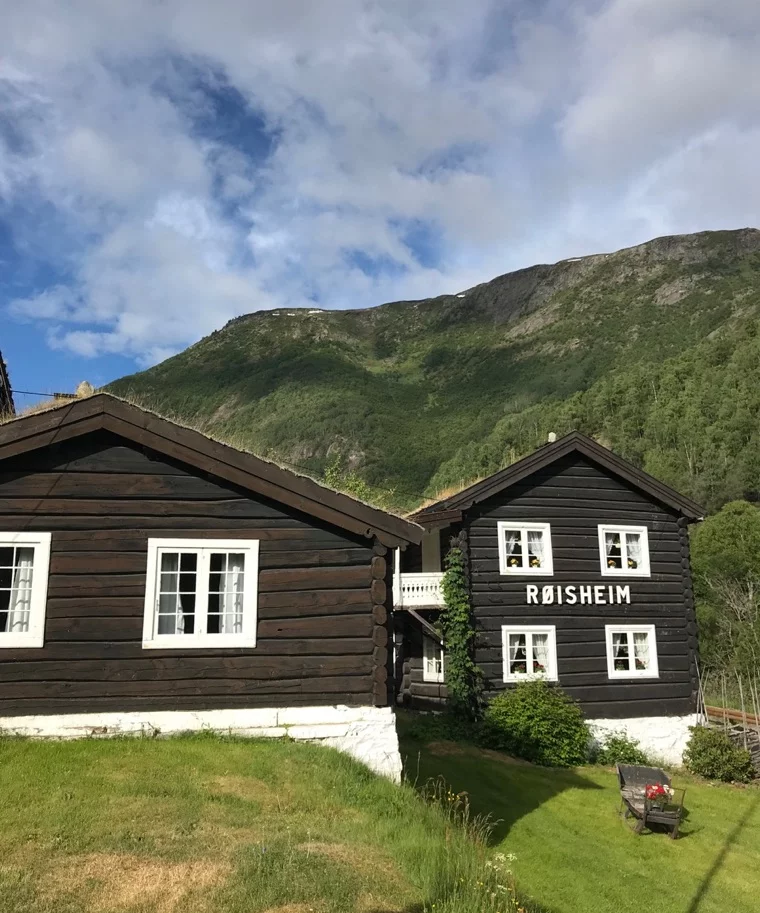
Beyond the headline hikes, Jotunheimen is packed with quieter trails, DNT cabins, and the kind of scenery that makes you feel small in the best possible way.
Jostedalsbreen National Park
This park is dominated by the vast Jostedalsbreen glacier, the largest on mainland Europe. It’s an awe-inspiring sight, and hiking here often means moving through stark contrasts. Expect lush valleys, bare rock, and thick glacial ice all within a few kilometres.
One popular route takes you to the foot of the Nigardsbreen glacier, where you can also join guided glacier walks. For more of a challenge, the trail to Flatbrehytta offers panoramic views of the glacier and surrounding mountains.
While the glacier is the star of the show, the park also boasts rushing rivers, deep gorges, and quiet forests, making it a varied and rewarding destination.
Hardangervidda National Park
As Norway’s largest national park, Hardangervidda is a vast and windswept plateau that feels a world away from the busy fjord towns. The landscape here is more subtle, with rolling hills, endless skies, and wide-open spaces that stretch for miles.
It's a haven for reindeer and birdlife, and a paradise for long-distance hikers. While the terrain is relatively gentle compared to other national parks, the distances can be considerable, making it ideal for multi-day treks between DNT cabins.
If you’re looking to disconnect, Hardangervidda offers the kind of solitude that’s increasingly hard to find in modern life. And despite its remoteness, it’s surprisingly accessible from Bergen or Oslo, with the Finse area a popular jumping-off point.
Folgefonna National Park
Folgefonna might be one of the lesser-known parks, but it’s no less spectacular. Dominated by Norway’s third-largest glacier, the park also features deep fjords, powerful waterfalls, and ancient forests.
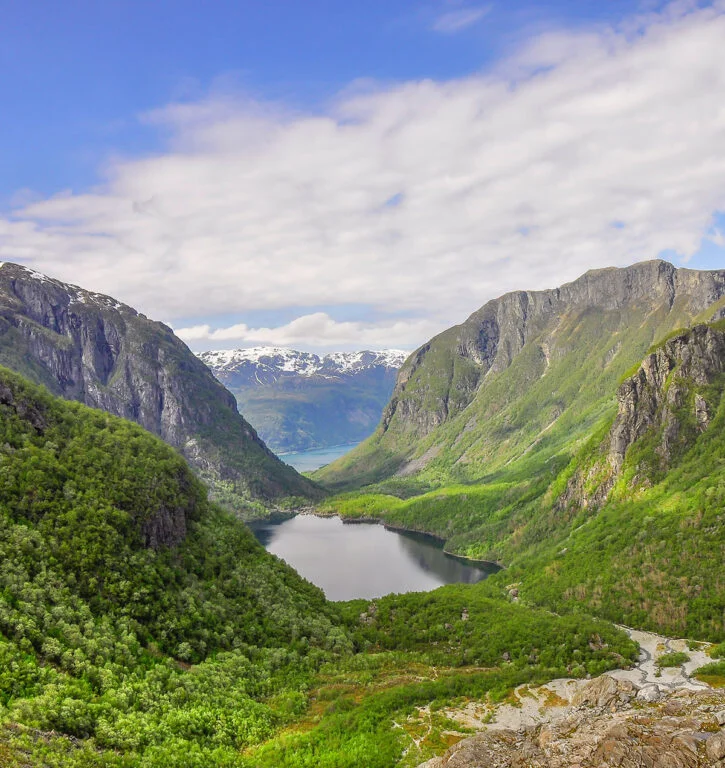
Hiking here can be as gentle or as challenging as you like. For something photogenic, the walk to Bondhusvatnet lake is hard to beat. It's a moderate trail that ends with a stunning view of the glacier-fed lake.
More ambitious hikers can make the climb up to Fonnabu, a DNT cabin perched high above the glacier, where the effort is rewarded with jaw-dropping views. In summer, guided glacier hikes are also available for those who want to get up close to the ice.
Some other top locations for walking holidays in Norway include:
Lofoten: Northern Norway at its most dramatic, the Lofoten archipelago tops the bucket list for many travellers, and with good reason. Dramatic scenery, stunning secluded beaches, and challenging hikes combine to offer the perfect outdoors vacation.
Voss: Known as the outdoor/extreme sports capital of the country, Voss is easy to access on the train from Oslo or Bergen, and some popular trails begin right in the town centre.
Popular Hikes in Norway
Some of Norway’s hiking trails have become globally recognised thanks to social media. Now, while that fame brings crowds, these hikes still deliver unforgettable experiences.
If you’re willing to plan ahead and go early (or outside peak season), they’re absolutely worth the effort. Here are arguably the most famous hiking trails in Norway:
Trolltunga
Trolltunga, or the “Troll’s Tongue,” is perhaps Norway’s most iconic viewpoint. The rock formation juts out horizontally from the mountainside, suspended 700 metres above the lake Ringedalsvatnet. It’s one of those surreal places that barely seems real, and that’s why thousands make the journey every year.
But don’t underestimate it. The Trolltunga hike is long—around 28 km roundtrip, taking 10 to 12 hours—with substantial elevation gain.
The trail begins near Skjeggedal, and while a new shuttle and mountain road can shave off the first few kilometres, it’s still a serious undertaking. The weather in this part of Norway can change rapidly, and snow patches can linger well into the summer.
You’ll almost certainly need to queue to get that photo on the rock, especially in July and August. If you're not a confident hiker, a guided tour is strongly recommended. Always start early to avoid returning in the dark.
Preikestolen (Pulpit Rock)
Preikestolen offers dramatic rewards for relatively moderate effort. The clifftop plateau sits 604 metres above the stunning Lysefjord, with vertical drops and heart-stopping views.
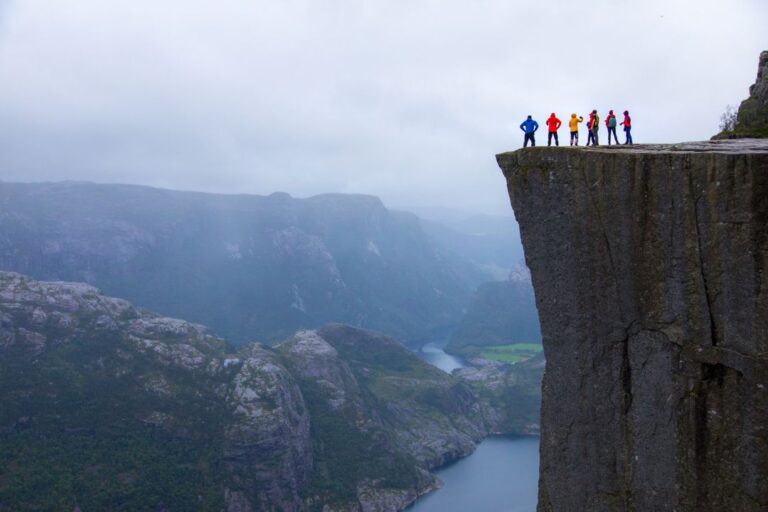
It’s one of Norway’s most visited natural attractions, thanks in part to its starring role in the film Mission: Impossible – Fallout.
The hike to Preikestolen is around 8 km roundtrip and takes most people 4 to 5 hours, including breaks. The trail is well-maintained and signposted, but it’s steep and rocky in parts, and not to be taken lightly.
Many visitors lured by the spectacular photography tackle it in trainers or even sandals. Don’t be one of them. Sturdy footwear is essential.
Preikestolen is easily accessed from Stavanger, and there’s a well-organised transport system during the summer months. Go early in the day or later in the afternoon (but not too late!) to avoid the peak-time rush.
Besseggen Ridge
Set in the heart of Jotunheimen National Park, the Besseggen Ridge is a rite of passage for Norwegian hikers. The trail winds along a narrow ridge between two lakes: Gjende, with its vivid turquoise waters, and the darker Bessvatnet.
The dramatic contrast in colours is caused by glacier melt, and the view is absolutely worth the effort.
Most hikers begin by taking a boat from Gjendesheim to Memurubu, then walking the 14km trail back along the ridge. It’s a full-day hike, often taking 6 to 8 hours, with steep ascents, some light scrambling, and exposed sections. Good fitness and a head for heights are helpful here.
Besseggen is hugely popular in summer, especially during weekends. Take the boat early, or consider hiking the opposite direction (from Gjendesheim to Memurubu) to avoid the crowd flowing one way.
Romsdalseggen
Romsdalseggen is regularly called “Norway’s most beautiful hike,” and once you see the view, it’s hard to argue. This dramatic ridge hike towers above the Romsdal Valley and the town of Åndalsnes, with sweeping views of fjords, waterfalls, and jagged peaks including the iconic Trollveggen (Troll Wall).
The 10km trail takes around 6 to 8 hours to complete and is considered challenging, with steep climbs, narrow ridges, and exposure to weather. It’s well-marked and generally solid underfoot, but parts of the ridge can feel dizzying if you’re not used to heights.
A shuttle bus from Åndalsnes drops hikers at the trailhead, and the hike finishes right back in the town — ideal for a celebratory meal or a well-earned swim in the fjord. This is a summer-only hike (July to September), and only in dry, stable weather.
Reinebringen
Reinebringen is a short but steep hike in the Lofoten Islands, offering panoramic views over the picturesque fishing villages of Reine, Sakrisøy, and Hamnøy.
The trail has been significantly improved with the construction of approximately 1,978 stone steps by Sherpas between 2016 and 2021, making the ascent safer and reducing erosion.
Despite the improvements, the hike remains challenging due to its steep gradient, with an elevation gain of about 448 meters over a 1.1 km trail. The best time to hike is during the summer months, from late May to early October, when conditions are safer and the trail is more accessible.
It's important to note that hiking Reinebringen in winter is strongly discouraged due to dangerous conditions, including icy steps, avalanche risks, and unpredictable weather.
Off the Beaten Path: Hiking Without the Crowds
If you're tired of long queues on exposed ridgelines or waiting your turn for a photo at a famous viewpoint, you're not alone. The good news is that Norway is packed with incredible hikes that offer just as much beauty without the crowds.
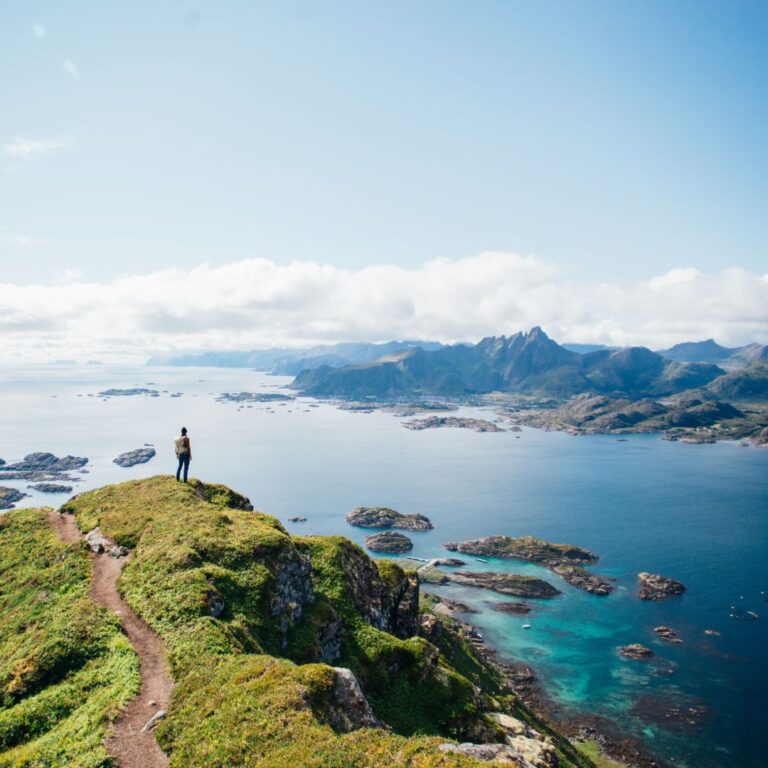
Hiking off the beaten path comes with plenty of advantages. There’s the peace and quiet, of course. You also gain the freedom to hike on your own schedule, without having to coordinate with ferry timetables or book a place on a crowded shuttle.
Most of all, you’re more likely to experience the authentic, local side of Norway. These are the places Norwegians themselves hike, often with no Instagram fame at all.
Finding these lesser-known trails can be easier than you might think. Local tourist offices are a great starting point, especially in smaller towns and villages where staff often know the area personally.
The website and app UT.no is also an excellent resource, offering thousands of mapped trails searchable by region and difficulty. If you're looking to avoid the major tourist hotspots altogether, consider exploring areas like Sunndal, Valdres, or Setesdal. The regions are just as scenic but far less visited.
Even in popular areas like the Lofoten Islands, it’s possible to find quieter trails if you’re willing to look beyond the famous peaks. Often, the best views are just a little off-centre, and far from the social media circus.
Urban Hiking in Norway
One of the things I love most about living in Norway is how seamlessly nature blends into urban life. No matter its size, every city offers instant access to forests, lakes, and trails.
You don’t have to travel far to feel like you’ve escaped civilisation. In fact, in many places, a ten-minute bus or tram ride is all it takes.
Oslo: Nordmarka
In the capital, the forested wonderland of Nordmarka lies just beyond the final stops of the T-bane. Hop off at Sognsvann or Frognerseteren, and within minutes, you’re walking among towering pines and peaceful lakes.
One of the most popular strolls is the route to Ullevålseter, where a rustic cabin awaits with coffee and waffles. If you're up for something longer, you can keep going to Kikutstua or even around the shores of Maridalsvannet.
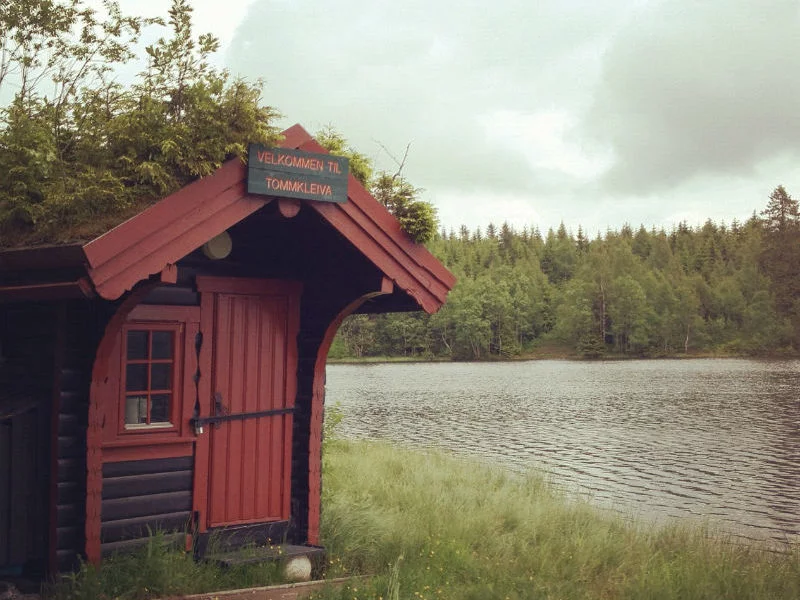
In winter, these same trails transform into cross-country skiing tracks or snowshoe routes, offering a completely different kind of outdoor experience.
Trondheim: Bymarka
On the western edge of Trondheim, Bymarka is my local escape. It's a vast forest and hill area criss-crossed by well-marked trails and dotted with lakeside cabins.
One of my favourite weekend routines is the walk to Grønlia, a cosy café cabin that's especially welcoming on a chilly day.
For something more substantial, the trail between Skistua and Elgsethytta offers a satisfying half-day circuit through pine forests and over quiet ridgelines. Like much of Norway, Bymarka turns into a snowy playground in winter, and the trails become a haven for skiers.
Bergen: The Seven Mountains
In Bergen, hiking is part of the city’s identity. Surrounded by its famous seven mountains, the city offers everything from short, sharp climbs to long, panoramic ridge walks.
The hike from Fløyen to Ulriken is a local favourite, combining sweeping views with that satisfying sense of crossing from one peak to another. If you’re short on time (or stamina), the stairway up Stoltzekleiven is a steep but quick route to fantastic city views.
Other City Highlights
Even beyond the biggest cities, Norway continues to impress with its urban nature access. In Tromsø, a climb up the Sherpa Steps to Fjellheisen rewards you with sweeping Arctic views and a cable car ride back down.
Kristiansand has the charming island of Odderøya, just minutes from the city centre, where coastal trails wind past lighthouses and rocky outcrops. Meanwhile, in Stavanger, locals love to stroll around the peaceful Mosvatnet Lake.
What to Pack for Hiking in Norway
Loads of people planning a walking trip in Norway email us to ask what gear they should bring. The answer is, of course, it depends. Are you planning to just ramble through the forests of Oslo or Bergen? Or are you planning a multi-day hike through one of the country's national parks?
In low-lying forests or along sheltered coastal paths, you can get by with relatively simple gear — it doesn’t need to be top-of-the-line.
But once you head into the mountains, it’s a different story. There, quality counts. Conditions can change quickly, and having the right equipment can make the difference between a great hike and a dangerous situation.
The key is to layer up and pack smart. Norwegian weather is famously unpredictable — even in midsummer you might encounter fog, rain, or snow at altitude.
Must-have clothing
- Base layer (wool or synthetic)
- Mid-layer (fleece or wool jumper)
- Waterproof jacket and trousers
- Hat, gloves, and buff
- Hiking boots with ankle support
- Thick hiking socks
- Sunglasses and sunscreen (yes, really!)
Optional but useful
- Map and compass (or downloaded trail apps like UT.no)
- First-aid kit and medications
- Power bank / spare phone battery
- Insect repellent
- Water bottle and snacks
- Emergency whistle and foil blanket
- Lightweight sitting pad
- Public transport info printed out
Introducing the Norwegian Trekking Association (DNT)
If you spend any time hiking in Norway, you’ll soon notice the distinctive red T symbols painted on rocks and trail markers.
These are the signposts of the Norwegian Trekking Association (DNT), which maintains a vast network of more than 22,000 kilometres of marked trails and over 550 cabins across the country.
Becoming a DNT member offers a whole range of benefits. You’ll get discounted rates at DNT cabins, including access to both self-service and no-service huts scattered throughout the mountains and forests.
Membership also includes access to detailed trail maps, planning advice, and even guided hikes in certain regions. On top of that, there are discounts available on outdoor gear from selected retailers around the country.
As of 2025, annual membership starts at around NOK 765, and for anyone planning more than a day or two of hiking, the savings and convenience can add up fast.
DNT cabins themselves range from basic shelters to more comfortable full-service lodges. Many are rustic and charming, equipped with bunks, a wood stove, and basic food supplies like crispbread and tinned goods. Some require advance booking, while others operate on a first-come, first-served basis.
Either way, they offer a safe and often scenic place to rest for a few hours or for the night, and a unique way to experience the Norwegian outdoors lifestyle.
Pre-Travel Checklist
Before you embark on a hiking trip to Norway, here's a quick checklist of important things to consider:
- Guidebook: The Moon Norway guidebook is the most up-to-date on the market
- Accommodation: Book your hotel in advance and save money
- Travel Insurance: Don't travel to Norway without adequate cover
- Car Rental: Book your rental car in advance and relax
- VPN: Secure your laptop and smartphone's internet connection while you travel
- Tours & Activities: Save money by pre-booking tours & activities
Plan ahead, respect the land, dress for the weather, and most importantly, enjoy the journey. Because in Norway, the journey often is the destination.


I think you have the limit on wild camping wrong, David. The rule is two nights. The English edition of the law at https://www.regjeringen.no/en/dokumenter/outdoor-recreation-act/id172932/ says two days, which is not clear enough. The law says two “døgn”, or 24 hour periods, so that means two nights. Most sites get this right. Also, the two night rule is explicitly widened in really wild areas, you can check the Norwegian text at https://lovdata.no/dokument/NL/lov/1957-06-28-16.
Hello there,
Thanks to the Nordic people for the very happy kisses,like this little very
Beautiful world.
Anneke
In my 24 years of being a guest flying in and out I have been on some amazing walks and I have many more planned. Norwegians are so fussy about hiking gear. Well my friend gets it all organised. She is big on hiking shoes and we love Bergans and Nøronna goretex jackets. You can go to the outlets where there are
Some great bargains. I am in love with all
This gear . I do love just going up to Oslo Marka and I have often taken the mountain bike and ridden for hours through the forest. Thanks David for the articles. It’s makes me so sad I am locked in Australia unable to leave because the government says so.
Jaimee